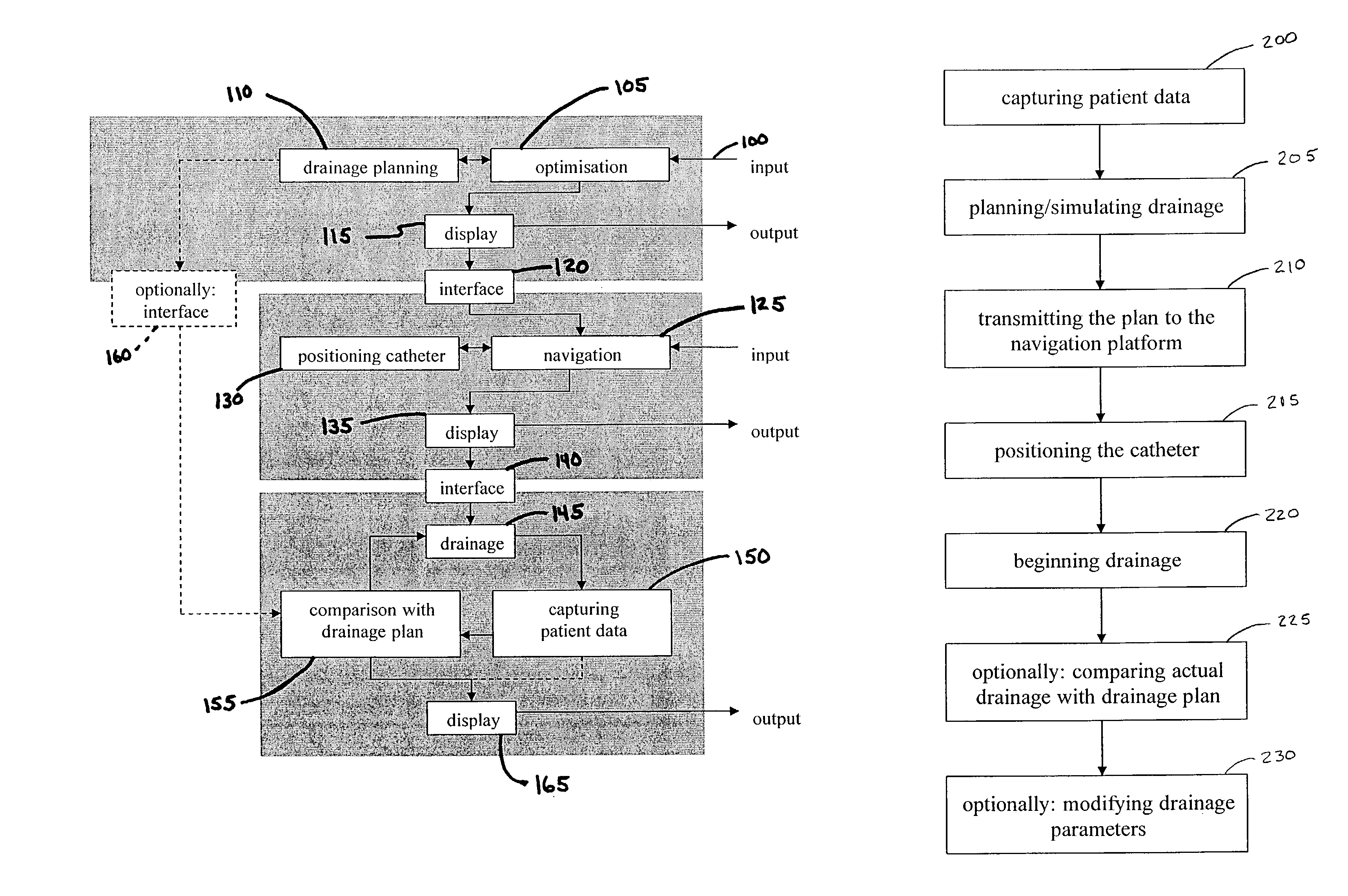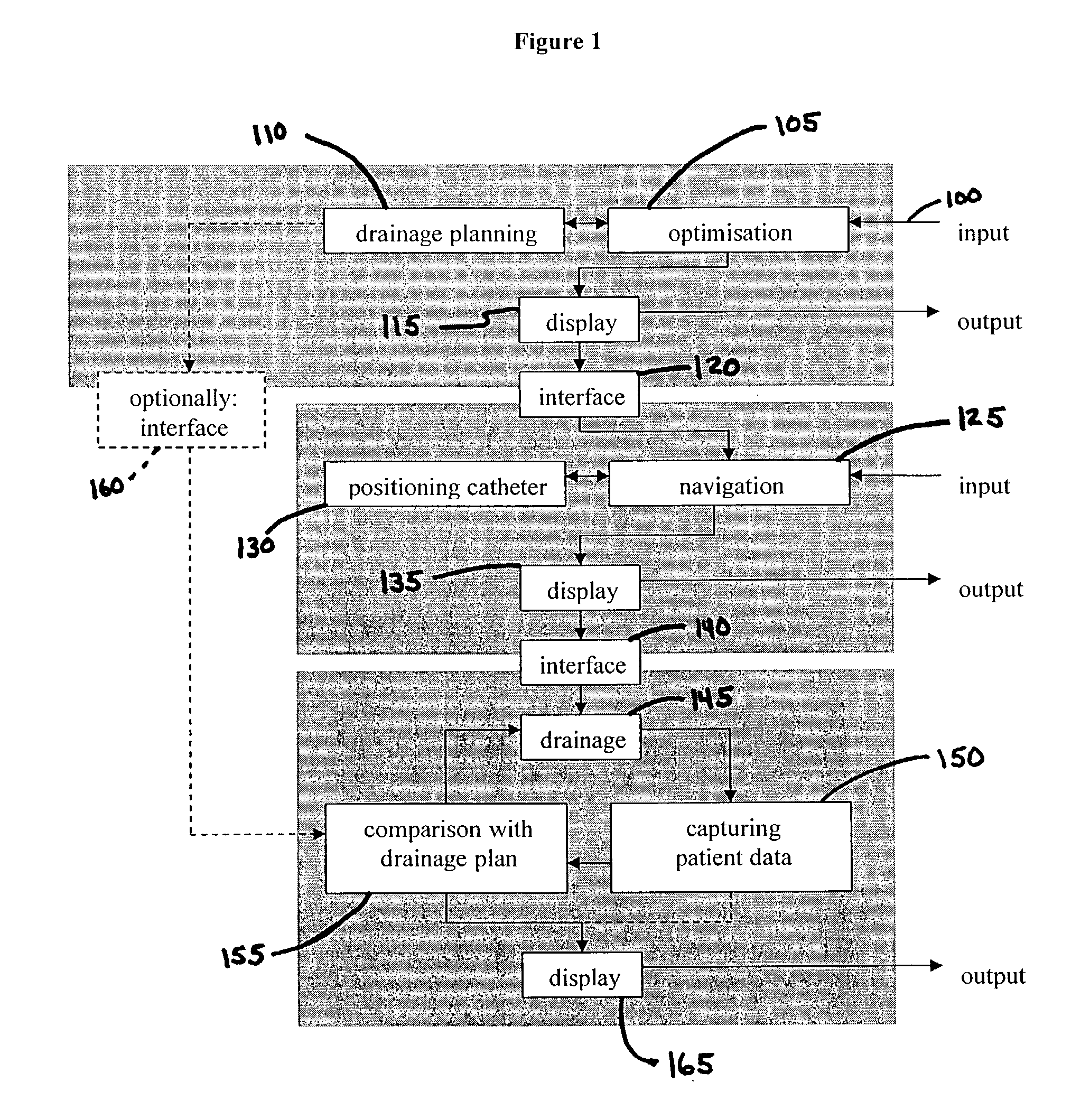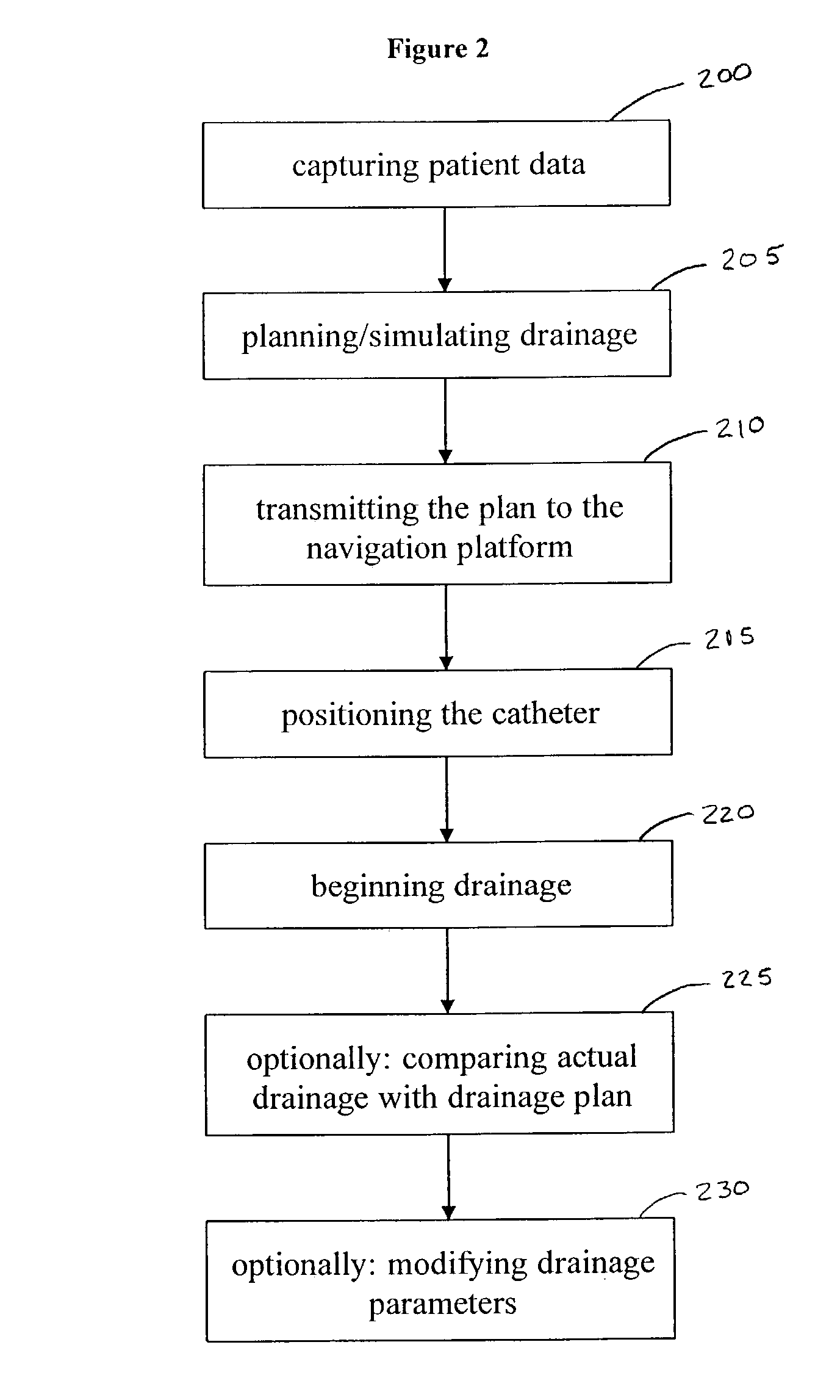Method and device for preparing a drainage
a drainage method and a technology for applied in the field of preparing and assisting a drainage tube, can solve the problems of inability to prepare and facilitate the placement of catheters, and the catheters can easily be unintentionally placed, so as to reduce side effects, reduce the risk of infection, and avoid the effect of affecting the treatment
- Summary
- Abstract
- Description
- Claims
- Application Information
AI Technical Summary
Benefits of technology
Problems solved by technology
Method used
Image
Examples
Embodiment Construction
[0032]FIG. 1 shows a schematic flow chart for preparing and performing drainage. As shown in FIG. 1, patient data can be inputted 100, for example, from a nuclear spin tomograph, which can be used to determine one or more particular regions for positioning catheters for drainage and to plan the drainage to be performed. The patient data can be obtained, for example, using the nuclear spin resonance system 3 (shown schematically in FIG. 3) once a patient to be treated has been examined. Using parameters for the properties of the tissue structures and for various types of catheters, stored, for example, in databases, one or more catheters suitable for the drainage can be selected, once the exact position of the interstitial fluid to be drained and of the body or tissue structure has been determined.
[0033]The obtained parameters of the body or patient can be used together with the catheter parameters and the fluid parameters, also, for example, stored in databases, to plan or simulate ...
PUM
 Login to View More
Login to View More Abstract
Description
Claims
Application Information
 Login to View More
Login to View More - R&D
- Intellectual Property
- Life Sciences
- Materials
- Tech Scout
- Unparalleled Data Quality
- Higher Quality Content
- 60% Fewer Hallucinations
Browse by: Latest US Patents, China's latest patents, Technical Efficacy Thesaurus, Application Domain, Technology Topic, Popular Technical Reports.
© 2025 PatSnap. All rights reserved.Legal|Privacy policy|Modern Slavery Act Transparency Statement|Sitemap|About US| Contact US: help@patsnap.com



